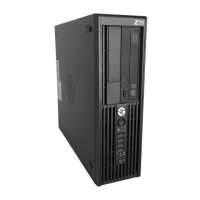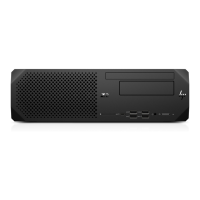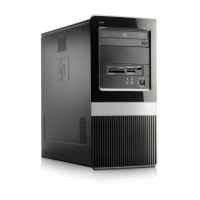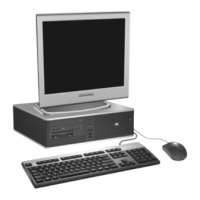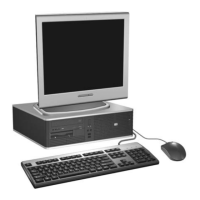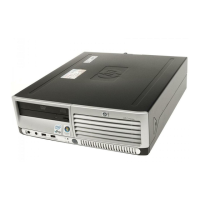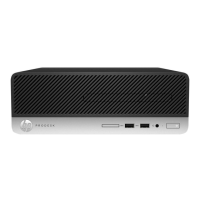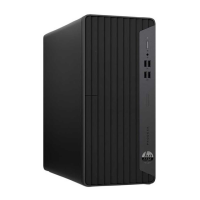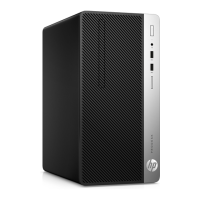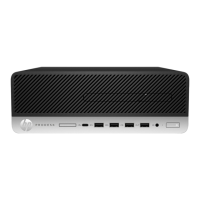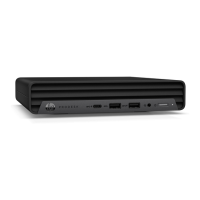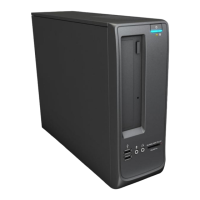
Do you have a question about the HP 100B SFF and is the answer not in the manual?
| operating temperature range | 10° to 35°C |
|---|---|
| nonoperating temperature range | -30° to 60°C |
| operating relative humidity | 10-90% |
| nonoperating relative humidity | 5-95% |
| operating maximum altitude | 3048 m |
| nonoperating maximum altitude | 9144 m |
| operating voltage range | 90-137Vac |
|---|---|
| rated voltage range | 100-127Vac |
| rated line frequency | 50-60Hz |
| power output | 65 W |
| rated input current | 1.6A @ 90 VAC |
| height | 27 cm |
|---|---|
| width | 10 cm |
| depth | 34.79 cm |
| weight | 4.8 kg |
Instructions on how to access and navigate the Computer Setup Utilities menu.
Configuration for system passwords, power-on passwords, and device security.
Guidance on understanding and preventing damage from electrostatic discharge.
Equipment and procedures for personal grounding to prevent ESD damage.
Precautions for static-proofing the work environment and tools.
Essential safety steps and procedures before disassembling the computer.
Detailed steps for installing DDR3-SDRAM memory modules (DIMMs).
Procedure for inserting memory modules into the system board DIMM sockets.
Guidelines for the installation and removal of internal storage drives.
Detailed steps for removing and installing a new system board.
Information and procedure for replacing the computer's internal battery.
Using System Restore to revert the computer to a previous state.
Procedure to erase, reformat, and reinstall the operating system and software.
Overview of different methods available for performing system recovery.
Performing system recovery when the Windows OS is functional.
Performing system recovery when the Windows OS is not responding.
Overview of the HP Vision Diagnostics utility for hardware testing.
Steps to diagnose and isolate issues before contacting technical support.
Resolving common issues like power, startup, and system responsiveness.
Troubleshooting common issues encountered with hard disk drives.
Resolving issues when new hardware is not recognized or functioning.
Resolving issues related to RAM modules, installation, and memory errors.
Resolving common problems related to software applications and operating systems.
Common text messages displayed during Power-On Self-Test (POST).
Understanding and diagnosing POST errors based on audible beep codes.
Procedure to disable or clear system supervisor and user passwords.
